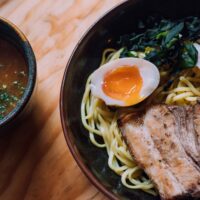In a world where culinary experiences are not just about taste but also visual indulgence, mastering the art of food presentation is paramount for chefs and food enthusiasts alike. “Mastering the Art of Food Presentation: Elevating Dining to a Visual Feast” delves into the secrets behind beautifully plated dishes that not only delight the palate but also feast the eyes. This article will explore the intricate details and methodologies that transform a simple meal into a memorable dining experience, emphasizing the importance of aesthetics in enhancing the overall enjoyment of food.
The Foundation of Food Presentation: Understanding Its Importance
In the realm of culinary arts, the art of food presentation is as crucial as the flavor and texture of the dish. It is the first impression that a dish makes, setting the expectations and invoking curiosity and excitement in the diner. The foundation of food presentation lies in understanding its psychological impact – visually appealing dishes are perceived to be tastier and more enjoyable. This phenomenon is rooted in our innate response to visual stimuli, where our brain associates vibrant, neatly arranged food with freshness, quality, and taste.
The art of food presentation also serves as a canvas for chefs to express their creativity and culinary philosophy. It reflects the chef’s attention to detail, care, and passion, elevating the dining experience from mere sustenance to an art form. Moreover, in the age of social media, where images of beautifully plated dishes can go viral, exceptional food presentation is instrumental in enhancing a restaurant’s reputation and attracting a wider audience.
The Role of Color and Texture in Enhancing Visual Appeal
The interplay of color and texture is fundamental in creating visually stunning dishes that captivate the diner’s attention. The use of vibrant, contrasting colors can make a dish pop and enhance its visual appeal, while a monochromatic palette can convey elegance and sophistication. Similarly, incorporating a variety of textures adds depth and interest to the presentation, enticing the diner to explore the dish’s different components.
Chefs can achieve this by carefully selecting ingredients that not only complement each other in flavor but also in color and texture. For instance, a crunchy element like a crouton or a sesame seed garnish can add a delightful contrast to a smooth, creamy soup. Likewise, the inclusion of colorful vegetables or edible flowers can transform a bland-looking dish into a vibrant masterpiece.
By understanding and applying these principles, chefs can create dishes that are not only delicious but also visually appealing, enhancing the overall dining experience and leaving a lasting impression on the diner.









